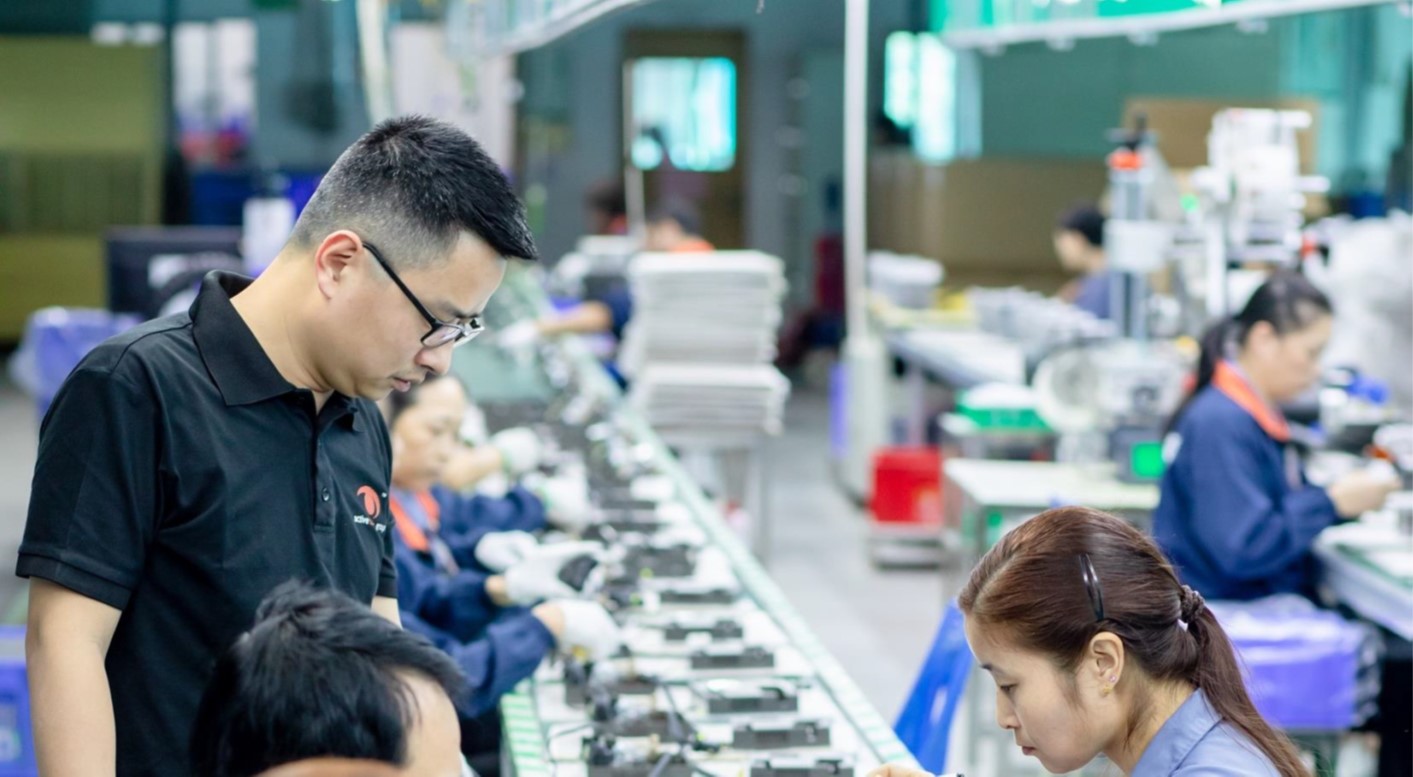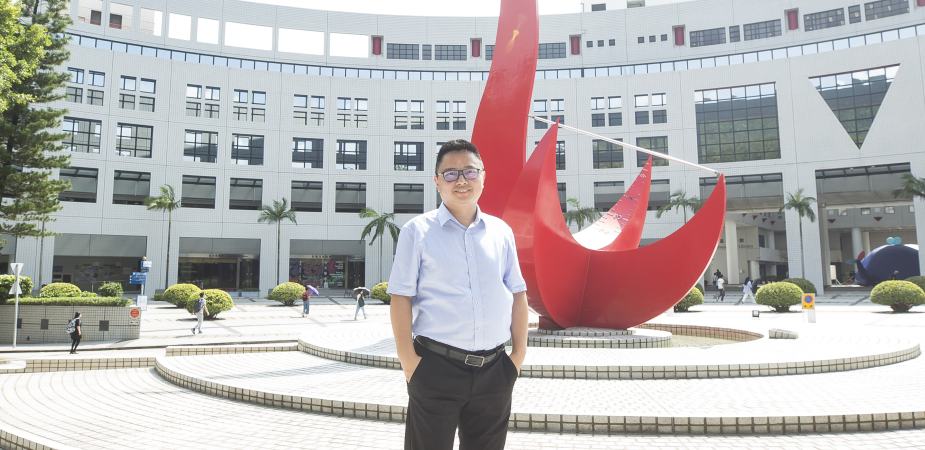The Chemical Engineer who Preserves His Love of Nature
The Chemical Engineer who Preserves His Love of Nature
Dr. Louis LAM Koon-Fung (2006 PhD in Environmental Engineering, 2002 BEng in Chemical and Environmental Engineering) has a passion in science that was ignited since his childhood, when he lived in the rural Tai Mo Mountain with his farmer grandmother. On a regular day of helping his family out in the fields, all of a sudden he became fascinated by how plants grew in the natural environment. Although his grandma was not able to answer, the textbooks he learned in Primary Five shed light on the intriguing photosynthesis. By then, he made up his mind to become a scientist that enabled him to appreciate more the beauty of nature. He made his way to HKUST’s BEng in Chemical and Environmental Engineering program in the late 1990s and later proceeded to his PhD without any hesitation.
Continuing to reside at Tai Mo Mountain during his studies at HKUST, he read every undergraduate textbook three to four times during the daily three-hour commute to and from campus, and ended up scoring A grades for most core courses as a graduate with First Class Honors. He published around 20 papers during his doctoral studies and gained his PhD in Environmental Engineering under the joint supervision of Prof. YEUNG King-Lun and Prof. Gordon MCKAY in the Department of Chemical and Biological Engineering.

Dr. Louis Lam and his PhD co-supervisor Prof. Yeung King-Lun

Dr. Louis Lam and his PhD co-supervisor Prof. Gordon McKay
He humbly attributes his success to the training at HKUST. “My research is mostly the result of hard work, not intelligence. I am good at strategizing and envisioning the full picture, such as detailing roadmaps for upcoming academic papers or patents. This is a skill I learned at HKUST’s Chemical and Environmental Engineering program: we need to have detailed, infallible plans for chemical plants to ensure they are accident-free. Any tiny flaw could have caused a catastrophe.”
After his doctorate, the locally-bred PhD graduate received an Alexandre Yersin Excellence Fellowship from Consulate General of France to join the Centre National de la Recherche Scientifique (CNRS) at Lyon, France, and then a Newton International Fellowship from Royal Society UK to conduct research at the prestigious University College London (UCL). He had thus extended his academic career to Europe before coming back to HKUST in 2011 as a Visiting Assistant Professor in the Chemical and Biological Engineering Department.

Dr. Louis Lam (first row in front, second right) and his class of Year 3 chemical engineering undergraduate students in 2012 at HKUST when he was Visiting Assistant Professor.
In 2012, the high-flyer joined UCL again as Lecturer (equivalent to the rank of Assistant Professor in US university system), competing with outstanding candidates from renowned universities worldwide to be a faculty member of a world’s top 10 chemical engineering department. “At UCL, lecturers teach students how to learn. Students who come to classes usually ask challenging questions, and they try to grasp the whole picture rather than bits and pieces.” Due to family reasons, however, he had to return to Hong Kong after a year and quit his decade-long academic career, for which he still feels indebted to the HKUST professors who had high hopes on him.
Inspired by red wine to repair tire punctures
Every cloud has a silver lining. During his time as a Newton Fellow in 2009, as his research strengths were known, his best friend, also a former HKUST schoolmate, who worked in automotive accessory manufacturer Active Tools International Limited approached him for help to provide formulae for a tire sealant regarding emergency puncture repair. Using his formulae and with rigorous testing and development, the company successfully launched its tire sealant and captured a large market share within two years. In 2013, he joined Active Tools as the inaugural Head of Research to lead the company’s newly established R&D unit. Inspired by the capillary action of red wine that results in “tears of wine”, he provided the sealant with the new transformative capability to automatically flow and target at punctures in tires and repair them. With reduced solid content and 100% environmentally-friendly components, the sealant then had increased efficiency while taking into consideration environmental protection by the minimal use of completely toxic-free chemicals.
Setting a goal for the company’s tire sealant repair kit to become one of the world’s bestsellers within three years, he is now leveraging economies of scale through mass production while striking a balance to ensure superb quality. Without compromising quality or manufacturing capacity at the company’s two plants in Guangdong’s Taishan and Dongguan, he thrives to guarantee a defect-free supply chain that encompasses the company and all vendors. This means frequent audits to monitor governance, safety and quality standards at all levels.
“Chemical plants often involve toxic or explosive materials. Mismanagement can result in fatal accidents that cause the lives of entire villages. I have to uphold extremely stringent standards and educate staff members to make sure that no error can be tolerated,” Dr. Lam said.
With strong vision as well as an eye for detail, he urges to enhance transparency and accountability in the operations. He prevents industrial accidents by trying out each of the hundreds of workstations in the plant himself, and demanding modifications. He introduces interviews to learn about ways to improve workers’ working and living conditions, as well as surveys for workers to rate their degree of satisfaction toward staff canteens. He looks into every single detail to strive for perfection.

Dr. Louis Lam inspects the progress of a production line in Active Tools’ Dongguan plant.
Finding resolution in green business
There was a time when some people considered chemical engineering to be in conflict with sustainability, which brought about struggles in the nature-loving Lam. As “green business” becomes the new buzzword in recent decades, he is glad to see that his initial passion for nature blends perfectly into his career. “When worldwide automobile brands approach us today, they do not focus on the economy aspect of our tire sealants; they ask about the carbon footprint we generate in producing them.” Since Dr. Lam used to teach Environment, Social and Governance (ESG) at HKUST, he is now leading Active Tools to apply ESG into the business management. He also leads the team to conduct environmental impact assessment and life cycle assessment (LCA) on the products to look for any clues of improvement. For instance, they have to consider details such as the type of machine used for injection moulding, in order to accurately calculate carbon footprint since the initial stage and ultimately minimize carbon emission in production.
“I am extremely grateful that I can now apply my knowledge of the environment and sustainability, as well as my training in science and technology, to make contributions to the society. It is indeed possible to maintain a high quality of life with minimal environmental impact.” He tries to start from his 1,000 staff members in the two plants, and extends the public education to his vendors down the supply chain. “Whereas Hong Kong is more advanced in terms of mindset for sustainability, Mainland China will catch up in green business within five to ten years, especially because of the 2060 goal of zero CO2 emission,” he said.
Aiming to return to the paddy fields after contributing to society
Having bid farewell to his academic career a decade ago and recently becoming General Manager of Active Tools overseeing the two plants in Guangdong, he is now pleased to have built a career in the industry that enables him to fully use his wide range of skills to solve problems. His professional needs motivate him to read extensively and intensively materials related to mechanical and electrical engineering, intellectual property as well as business and economics. Referring to himself as an introvert by nature, he has learned at work in the Greater Bay Area to become an eloquent communicator and proficient leader.
After a few years as he turns mid-forties, he aspires to focus more on research and development, together with sustainability and corporate social responsibility. “This includes contributing to schools in the communities where we operate, giving donations, improving water quality, as well as further promoting product innovation for the company.”
Over the past years, the company has been offering internship opportunities for HKUST students via the University’s Undergraduate Research Opportunities Program (UROP) and the Chemical and Biological Engineering Department’s Co-op Program. “Rather than giving students mundane daily tasks or having job shadowing, I ask them to participate in real-life projects with impact. I first consider the larger projects we have, break them into parts, and ask students coming at different semesters to complete the tasks one by one consecutively with a full picture in mind. When accomplished, students take pride in the fact that they were part of a visible, milestone project,” said Dr. Lam, who also serves as Adjunct Assistant Professor at HKUST’s Division of Environment and Sustainability.
Dr. Lam was inspired by nature since a young age to pursue science and later engineering, then academia, research and development, and now leadership in an industry-based business.
To students who want to study science and engineering, he has the following advice: “There are similarities and differences between science and engineering, and young people often do not think clearly about them. They should do soul-searching to find out these differences and fine-tune what they desire to delve into.”
As for Dr. Lam himself, his ultimate dream, out of his love of nature, is about returning to the paddy fields and finding leisure in farming upon retirement – after making contributions to the world for decades by improving quality of life and enhancing sustainability with his knowledge, training and experience.

Dr. Louis Lam (front row, twelfth left) and other senior management of Active Tools in front of the company’s new plant in Taishan, Guangdong Province. The plant was officially opened in July 2023.

Dr. Louis Lam at the opening ceremony of Active Tools’ Taishan plant in July 2023

